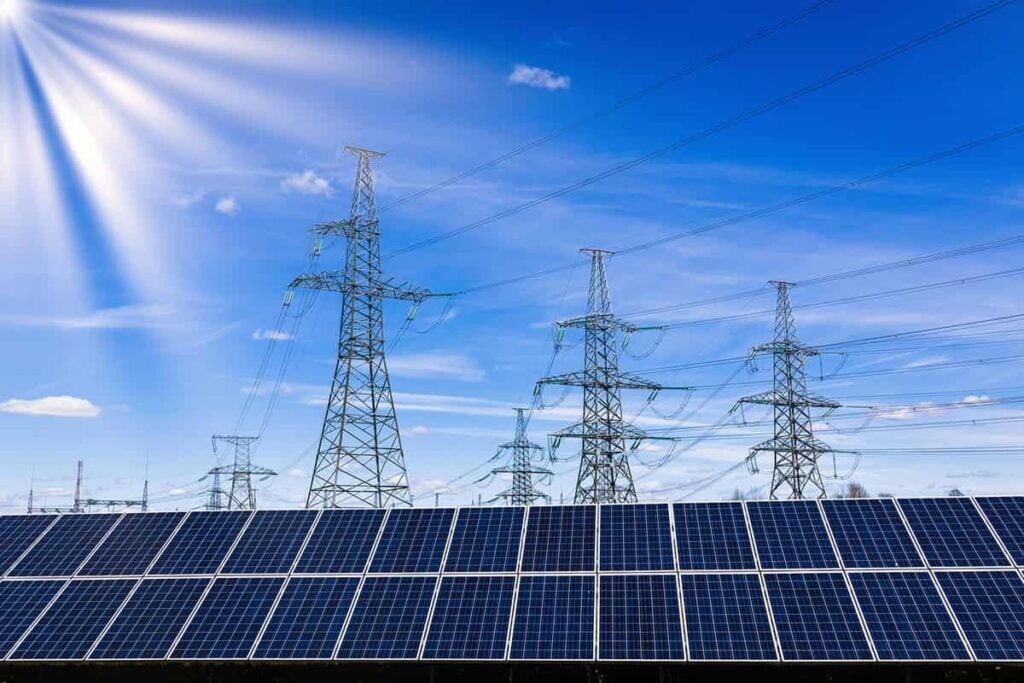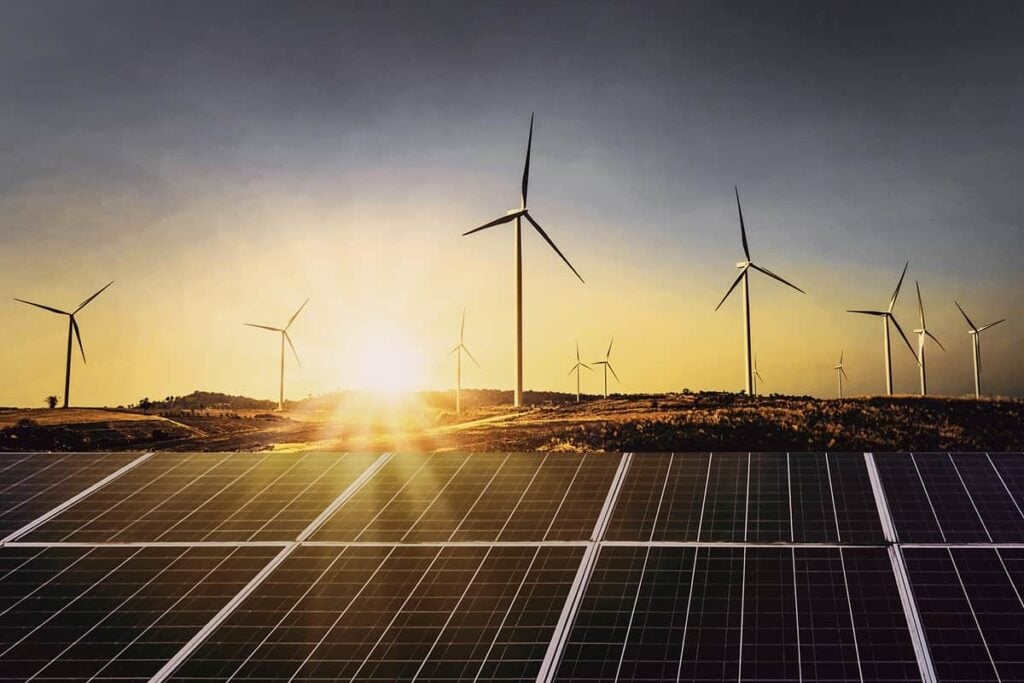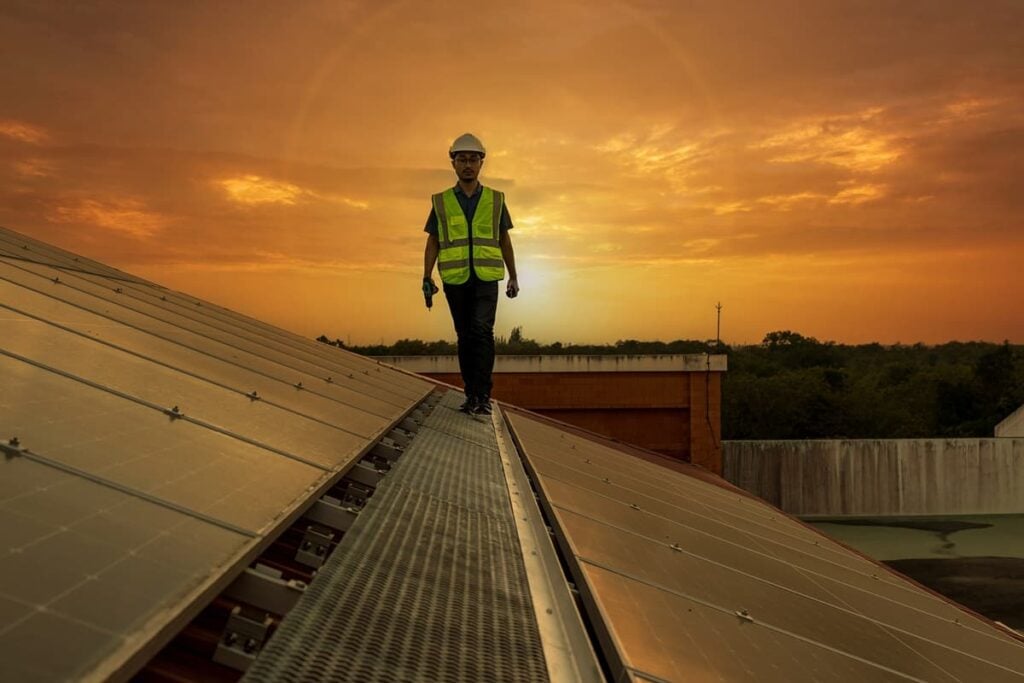The Largest Wind Turbine Manufacturer in the World
Table of contents

In our article on how “Wind Power Quietly Leads Solar Power,” we talked about how onshore wind has become the first renewable energy source to beat conventional carbon-based energy generation on price. That’s according to investment bank Lazard which looked at the “Levelized Cost of Energy” which subtracts all subsidies and penalties from the equation to truly compare apples to apples. With the continued decline in the cost of generating electricity using alternative energies, it’s no surprise that the world’s biggest electric utility company also happens to be the world’s biggest producer of alternative energy – mainly solar and wind.

Since last year alone, onshore wind has become 7% cheaper and utility-scale solar 13% cheaper. Still, coal and gas remain the largest sources of new electricity with solar PV, wind, and hydroelectricity taking 3rd, 4th, and 5th places and accounting for around 13% of new electricity generation each. As the energy markets react to these price drops, new additions to global power generation capacity will favor renewables. According to the International Energy Agency, renewables will make up more than 60% of new additions until 2040, and most of these will come from wind and solar PV.
In our article on the iShares Global Clean Energy ETF, we discussed how the rapid price decrease of photovoltaic panels is destroying margins for many solar providers. Consequently, investing in solar hardware providers has not been lucrative despite widespread adoption of the technology. On the other hand, because of its competitive (and decreasing) prices, wind is an attractive theme if you’re looking to invest in renewable electricity generation. The straightforward solution is to look for listed power and utility companies with significant exposure to wind. Pure play stocks we covered earlier include Ørsted, Next Era Energy, and TPI Composites. We can also look at “picks and shovels” plays, companies that manufacture and install wind turbines. The largest of these is a Danish company called Vestas.
Who is Vestas?


Business Segments
Vestas breaks down its operations into three divisions.
- The Power Solutions division handles turbine manufacturing, transportation, and installation
- The Service division takes care of servicing and performance optimization of both Vestas and non-Vestas turbines
- The Offshore division, separated from the company’s consolidated financial reports because it’s a joint venture, handles everything related to offshore turbines including servicing
Power Solutions
According to the latest 2018 annual report, the Power Solutions division was responsible for close to $9.4 billion or 84% of onshore revenues. Revenues remained flat compared to 2017 as increased deliveries to customers were offset by pricing pressures. As the renewable energy industry matures, countries are moving away from directly supporting new installations with predetermined and guaranteed remuneration rates to setting prices through auctions. This puts a pressure on revenue and margins – Power Solutions’ operating margin has decreased from 13.5% in 2017 to 8.9% in 2018.
On the other hand, the division has increased its order intake by 27% over the same period, to a record level of 14.2 GW worth $11.7 billion. At the end of the period, its order backlog amounted to 15.6 GW worth $13.1 billion. Because Vestas’ power projects are massive multi-year affairs, revenue is recognized at the time of turbine handover, hence ongoing projects are counted into the backlog. Having such a large backlog is not uncommon. Other industry leaders like Goldwind, and Siemens Gamesa both have large backlogs. Between record order intake and auction price pressures, the speed of project deliveries will be key for Vestas to remain the industry leader in the coming years.
Service
The Service division has grown its revenue by 10% in 2018 to $1.8 billion and now makes up 16% of the onshore business. The division has also increased its operating margin to 25.2% from 20.1% in the previous year thanks to the reliable performance of the wind turbines under service contracts and efficient cost management. Vestas has also acquired Utopus Insights, a private data science and energy analytics company spun out of IBM Research, and now offers analytics applications to its Service customers including predictive maintenance, forecasting, and power plant optimization. Service agreements are also growing in line with the order backlog – the division currently has agreements with expected future revenue of 16.3 billion.
Offshore
The offshore wind segment is formed under a joint venture with Mitsubishi Heavy Industries (MHI Vestas Offshore Wind) and concluded its first profitable year since its launch in 2014. Offshore wind is quickly becoming an affordable part of the mainstream energy mix, and the International Energy Agency projects a 15-fold growth in capacity and $1 trillion in cumulative investments by 2040 thanks to falling costs, larger turbines, floating foundations, and supportive government policies. MHI Vestas’ successful ramp-up of its V164 turbine (the first turbine with a capacity of 10 GW) has resulted in revenues of $1.2 billion and a profit of close to $29 million. The company expects Europe to remain the leader in offshore installations with its excellent North Sea wind resources and ambitious climate targets.
Financial Performance
Vestas has significantly outperformed both the S&P500 and the Nasdaq Composite indices over the past one and five years. The stock posted a one-year return of +41.36% against S&P 500’s +15.97% and NASDAQ’s +21.52% and a five-year return of +171.68% against S&P500’s +51.22% and NASDAQ’s +81.22%. The recent early November spike in the company’s share price came just after it released its latest earnings report, confirming a highly successful Q3 with earnings almost double compared to the same period in 2018.

For dividend investors focused on income, there’s some of that to be had as well. The company started paying dividends in 2015 and has consistently increased its dividend yield and payout ratio since then. The 2018 dividend translates to a yield of 7.5% with a payout ratio of 33.54% which means there’s lots of room to grow.
Conclusion
In 2018, the world’s population grew by 1.1% yet electricity demand increased by 4%. That’s no surprise when you consider all the horsepower needed to run machine learning algorithms, the explosion of electric vehicle adoption, and the proliferation of servers needed to churn out worthless cryptocurrencies. According to Vestas and Bloomberg New Energy Finance, around $4.5 trillion will be invested in onshore and offshore wind energy in the next 30 years – about $145 billion a year on average. Let’s do a little back-of-the-napkin math. If Vestas holds its market leadership position of installing 1/6th of global capacity consistently over the period, it needs to do two things. First, acquire orders of $24 billion on average per year until 2050. Second, and more importantly, deliver these orders at the same rate or quicker.
Orders are relatively easy to come by given the industry is growing at a rapid rate. Order backlogs are growing across the whole industry and increasing competition through auction pricing will drive down prices. Being the industry leader, Vestas is well placed to capitalize on this growth as long as they can consistently deliver projects on time and manage their growing backlog.
Sign up to our newsletter to get more of our great research delivered straight to your inbox!
Nanalyze Weekly includes useful insights written by our team of underpaid MBAs, research on new disruptive technology stocks flying under the radar, and summaries of our recent research. Always 100% free.














